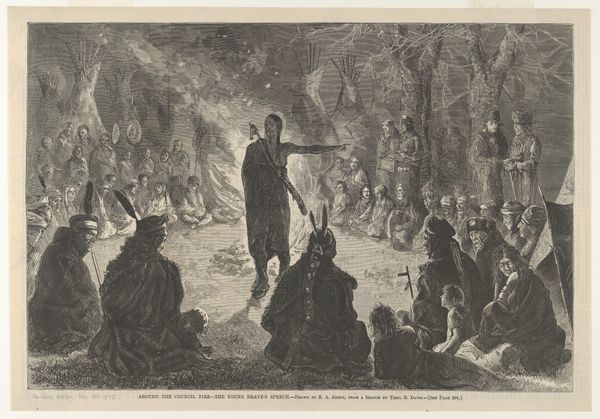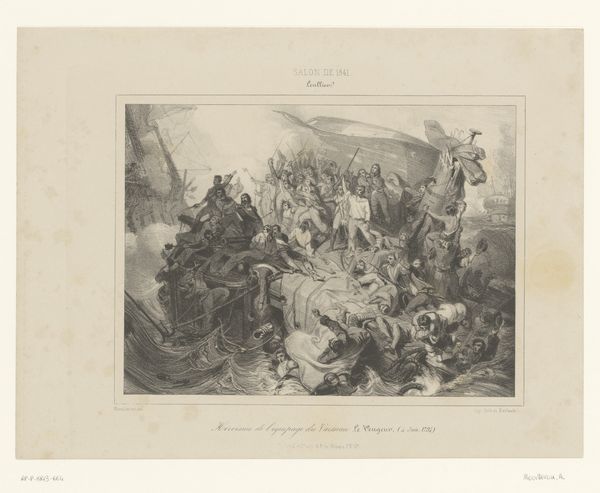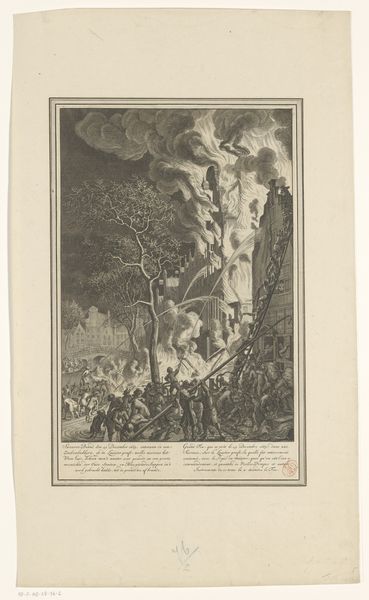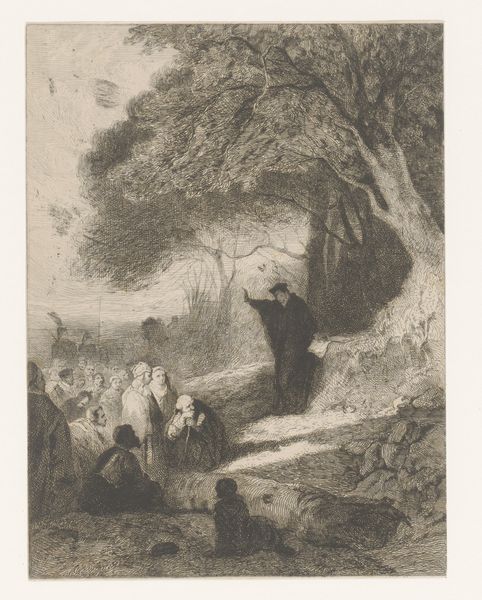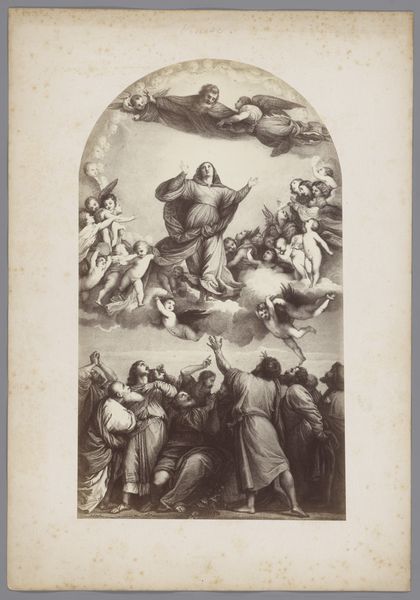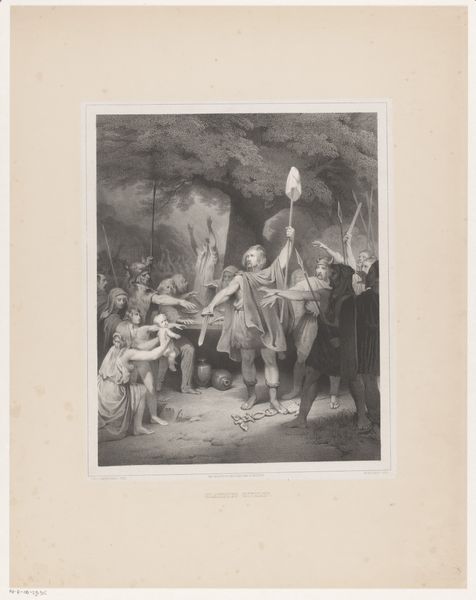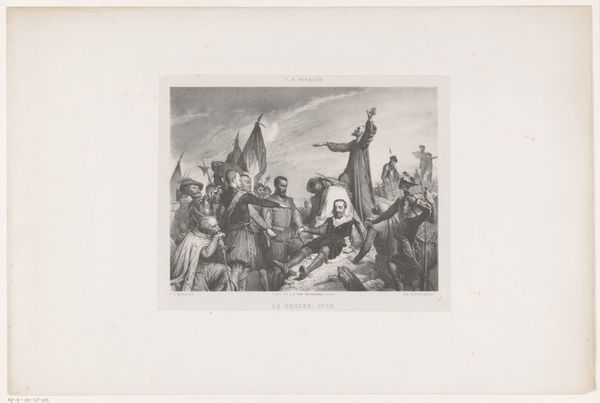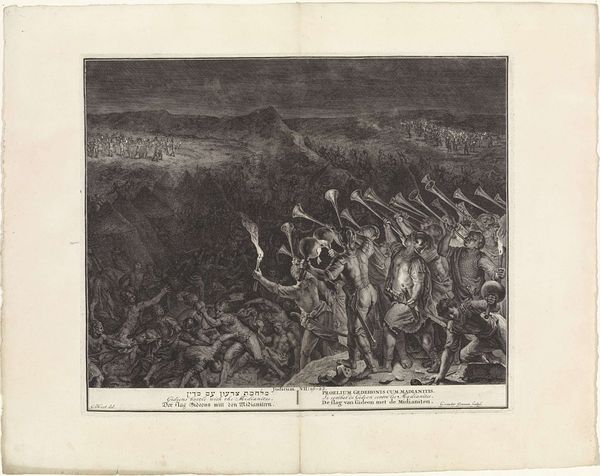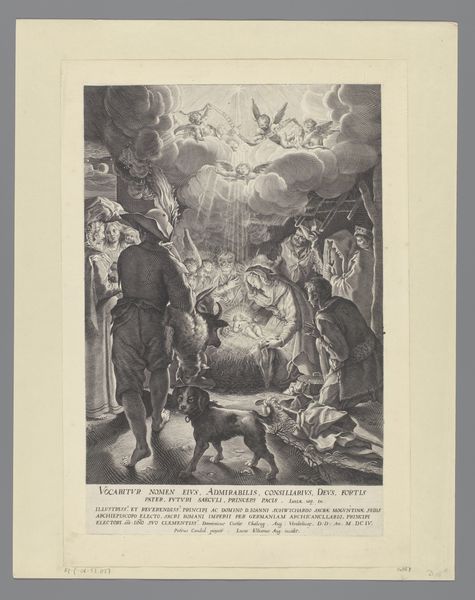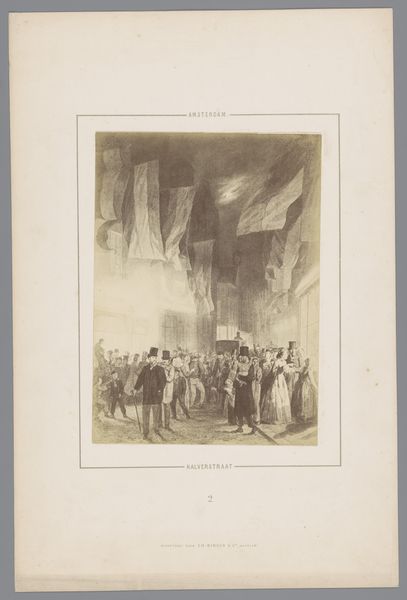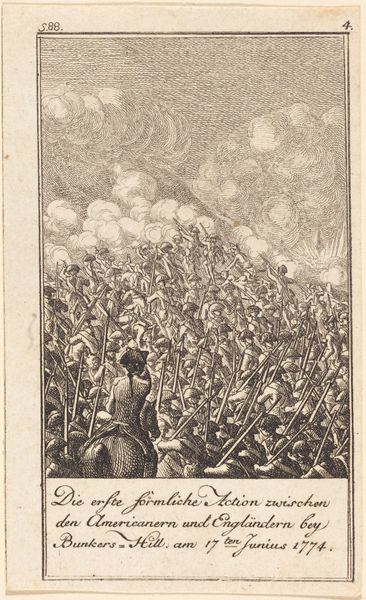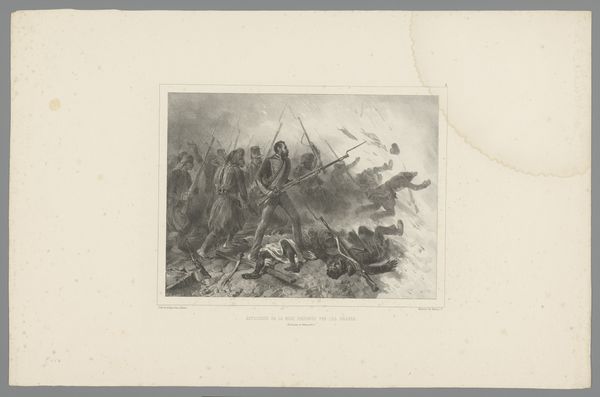
Dimensions: height 388 mm, width 275 mm
Copyright: Rijks Museum: Open Domain
Curator: Héliodore Joseph Pisan created this engraving, "Verschijning van de heilige Joris," or "Apparition of Saint George," in 1879. Editor: It's strikingly dramatic. The sharp contrast between the dark, crowded battlefield and the radiant figure in the sky immediately draws my eye. It feels both heavenly and chaotic. Curator: Engravings like this played a vital role in disseminating imagery and historical narratives during that era. Consider the social context. This print offered a relatively affordable way for people to access and contemplate a grand historical painting within their own homes, helping shape perceptions and perhaps reinforce existing cultural mythologies related to heroism and faith. Editor: Absolutely. Looking closely at the work itself, it is difficult to not think of the amount of work gone into this. I am also compelled by the craftsmanship, and find myself imagining Pisan meticulously carving those lines into the metal plate. How the light, seemingly coming from the divine apparition, illuminates and obscures parts of the material… the dark ink, the bright blank areas where light catches. It makes me curious about printmaking as a widespread method and process of relaying the same imagery in many locations. Curator: And Saint George himself. He represents ideals of chivalry and sacrifice that held significant socio-political value, but notice the historical narrative—not only the obvious story but also that this vision seems strategically timed above armed soldiers ready to fight. It seems charged with intention. Editor: I find myself wondering who these prints were for, the working people on the field who need religious guidance? Were these engravings also traded to the wealthy as a form of visual story telling to relay certain cultural myths? The details make you ponder, like where did the materials come from? Where was Pisan learning this engraving skill? Curator: Exactly. It also illuminates how history, legend, and faith become intertwined and reinterpreted through art for social consumption. Pisan presents it for an audience very interested in tales such as this. Editor: Well, looking at it in this context definitely deepens my understanding and I hope this sparks the visitor's curiosity about the world it came from. Curator: Indeed. Analyzing it in this way helps us appreciate not just the aesthetic skill but also its cultural power.
Comments
No comments
Be the first to comment and join the conversation on the ultimate creative platform.
